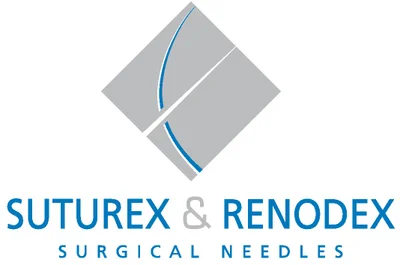You have successfully logged out.
Mastering Import Export Certification for Best Suture Needles A Comprehensive Tutorial
 The global market for suture needles is projected to reach USD 3.7 billion by 2025, growing at a CAGR of 5.9% as reported by MarketsandMarkets. Mastering import-export certification for suture needles is essential for manufacturers and distributors aiming to navigate this competitive landscape effectively. In an industry where quality and compliance are paramount, understanding the detailed technical specifications and regulatory requirements can make a significant difference in achieving market success. This comprehensive tutorial will guide you through the process of obtaining necessary certifications and highlight the top types of suture needles, empowering you with the knowledge to thrive in the import-export arena. Whether you are a seasoned professional or new to the field, mastering these elements is crucial for ensuring product excellence and meeting international standards.
The global market for suture needles is projected to reach USD 3.7 billion by 2025, growing at a CAGR of 5.9% as reported by MarketsandMarkets. Mastering import-export certification for suture needles is essential for manufacturers and distributors aiming to navigate this competitive landscape effectively. In an industry where quality and compliance are paramount, understanding the detailed technical specifications and regulatory requirements can make a significant difference in achieving market success. This comprehensive tutorial will guide you through the process of obtaining necessary certifications and highlight the top types of suture needles, empowering you with the knowledge to thrive in the import-export arena. Whether you are a seasoned professional or new to the field, mastering these elements is crucial for ensuring product excellence and meeting international standards.
Understanding Import Export Certification: Key Requirements and Processes for Suture Needles
When it comes to the import and export of suture needles, understanding certification requirements is crucial for both compliance and market access. The process begins with recognizing the specific standards and regulations set forth by customs authorities in the importing and exporting countries. Typically, documentation such as import permits, export licenses, and quality assurance certificates must be obtained to ensure that the products meet health and safety regulations. It is essential to stay updated on these requirements since they can vary widely by region.
Additionally, manufacturers and exporters must adhere to international standards like ISO certifications that assure the quality and reliability of their suture needles. Engaging with a customs broker or a compliance expert can streamline the process, helping navigate the complexities associated with tariffs, duties, and regulations. Understanding the entire landscape of import-export certification not only facilitates smoother transactions but also builds trust with healthcare providers who rely on these essential medical products.
Mastering Import Export Certification for Best Suture Needles
| Item Type | Certification Requirement | Regulatory Authority | Documentation Needed | Processing Time |
|---|---|---|---|---|
| Suture Needle Type A | ISO 13485 Certification | FDA | Product Specifications, ISO Certificates | 3-4 Weeks |
| Suture Needle Type B | CE Marking | European Commission | Technical File, Risk Assessment | 4-6 Weeks |
| Suture Needle Type C | Health Canada Licensing | Health Canada | Clinical Data, Quality Management System | 2-3 Months |
| Suture Needle Type D | TGA Approval | Therapeutic Goods Administration | Product Evidence, Registration Form | 3-5 Weeks |
The Importance of Quality Standards: ISO and FDA Regulations in Suture Needle Manufacturing
In the realm of medical devices, the manufacturing of suture needles stands out as a critical process that demands meticulous attention to quality standards. Adhering to regulations set by organizations such as the International Organization for Standardization (ISO) and the Food and Drug Administration (FDA) is paramount. ISO standards ensure that suture needles are produced with consistency and reliability, facilitating safe usage in medical procedures. The implementation of these standards aids manufacturers in not only improving their production processes but also in instilling confidence among healthcare providers and patients regarding the safety and effectiveness of the products.
The FDA regulations add another layer of scrutiny to the suture needle manufacturing process. These regulations require manufacturers to demonstrate that their products meet stringent safety and efficacy criteria before they can be approved for the market. This rigorous process involves comprehensive testing and documentation, ensuring that only the highest-quality suture needles reach healthcare professionals. For manufacturers, understanding and mastering these regulations is essential for both compliance and competitive advantage in the industry. Ultimately, these quality standards play a pivotal role in enhancing patient safety and outcomes in surgical procedures.
Quality Standards in Suture Needle Manufacturing
Navigating Global Markets: Key Regions for Importing and Exporting Suture Needles
Navigating the global markets for importing and exporting suture needles requires a keen understanding of key regions, particularly as the medical devices sector continues to expand. One noteworthy region is Vietnam, where the medical devices market is projected to reach a remarkable US$1.77 billion by 2025. This rapid growth not only highlights the increasing demand for high-quality medical devices but also presents exciting opportunities for businesses looking to enter or expand in this market.
When considering entering the Vietnamese market, it’s essential to understand local regulations and certification requirements for medical devices, including suture needles. Engaging with local distributors can provide insights into these regulations and help in navigating the import-export landscape effectively.
**Tips:**
1. Conduct thorough market research to identify customer preferences and local competition.
2. Establish partnerships with local firms familiar with the regulatory environment to facilitate smoother entry and compliance.
As the demand for quality healthcare products rises in Vietnam and other key regions, aligning your strategies with these market dynamics will be crucial for success in importing and exporting suture needles.

Statistical Analysis: Market Trends and Growth Projections for the Suture Needle Industry
The suture needle industry is poised for significant growth, as statistical analysis indicates promising market trends and projections. Recent data suggests that the global absorbable sutures market, valued at approximately USD 2.9 billion in 2024, is expected to grow at a robust CAGR of 5.3% up until 2030. This persistent demand will likely influence the development and certification processes of suture needles, emphasizing the need for manufacturers to prioritize compliance with import-export regulations.
Tip: To stay ahead in this competitive market, companies should continuously monitor regulatory changes and market demands. Engaging in comprehensive market research can provide insights into consumer preferences, allowing for strategic adjustments in product offerings.
Furthermore, the hypodermic syringes and needles market in the UK anticipates a substantial growth rate of 16.2% from 2024 to 2030, reflecting an increased focus on innovation and quality in medical devices. Investing in advanced technology and manufacturing processes could enhance product efficacy, benefiting both healthcare providers and patients.
Tip: Collaborating with industry leaders and participating in professional networks can offer valuable knowledge sharing, contributing to enhanced product development and successful market penetration strategies.
Best Practices for Compliance: Tips for Securing Import Export Certification Successfully
Securing import-export certification for suture needles is vital for businesses aiming to navigate the complex landscape of international trade. Adhering to best practices can streamline the process and enhance compliance, ultimately ensuring that your products meet the regulatory requirements of different countries.

One effective tip for successful certification is to thoroughly research the specific regulations and standards in the markets you wish to enter. Understanding the differences in compliance requirements can prevent costly delays. Engaging with experts who specialize in medical device regulations can provide invaluable insights and guidance.
Additionally, maintaining meticulous documentation is crucial. From product specifications and safety testing results to quality control processes, having a comprehensive and organized record can make the certification process smoother. It's also beneficial to implement regular audits of your processes to ensure ongoing compliance with evolving regulations, which can significantly reduce risks associated with import-export certification.
